
| Publisher: | HarperVia | |
| Genre: | Short Stories (single author), Literary, Asian American, Fiction | |
| ISBN: | 9780063081789 | |
| Pub Date: | June 2021 | |
| Price: | $25.99 |
| Starred | Fiction |
by Jack Wang
The Chinese diaspora is dispersed across continents and decades in Jack Wang's magnificent debut, We Two Alone (selected as one of the CBC's 2020 Best Canadian Fiction and Quill & Quire's 2020 Books of the Year). Wang's seven-story collection traverses North America, Europe, Africa and Asia, pausing at pivotal moments over a century of history, each presented through a peripatetic Chinese lens.
Wang's opening story, "The Valkyries," features a Vancouver orphan teen, indentured to an opium-addicted laundry owner, who starts playing women's hockey after the men's team rejects him for being Chinese. In "The Night of Broken Glass," a Chinese diplomat family posted in Vienna is witness to Kristallnacht and the beginnings of its horrific aftermath. Wang's grandmother inspired "The Nature of Things," about a Canadian couple who move to Shanghai, only to be swept up in the exodus as the Japanese invade the city in 1937 during the Second Sino-Japanese War. A medical student in South Africa is driven by apartheid to move elsewhere in "Everything in Between." Love--and Oxford degrees--can't bridge the divide for a wealthy Londoner and Chinese immigrants' son in "Belsize Park." In "Allhallows," a Chinese Canadian hockey player, demoted to a Florida team, takes his sons trick-or-treating one day late. And the titular "We Two Alone" intimately reveals the implosion of a 20-year marriage between two actors.
Wang's protagonists are ethnically Chinese, but their lives--either by birth or circumstances--happen beyond national borders, as they adapt (or not), plant (or not), merely survive and sometimes thrive around the world. Global citizen Wang, a Vancouver transplant teaching at Ithaca College, writes with masterful assurance, eschewing labels, and creating exquisite gems of universal empathy. --Terry Hong, Smithsonian BookDragon
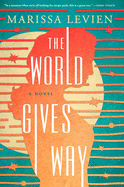
| Publisher: | Redhook Books | |
| Genre: | Dystopian, Disaster, Literary, Fiction | |
| ISBN: | 9780316592413 | |
| Pub Date: | June 2021 | |
| Price: | $28 |
| Fiction |
by Marissa Levien
A woman gives her baby to her indentured servant and apologizes--right before jumping to her death from the penthouse balcony--at the start of Marissa Levien's race-against-time-thriller The World Gives Way.
In the near future, a spaceship the size of Switzerland embarks on a proposed 200-year journey in search of a human-friendly planet. The mega-rich can afford lavish living quarters aboard the ship, but the less than affluent can obtain passage only by agreeing to a 50-year worker-servant contract to earn their keep.
Twenty-five-year-old orphan Myrra is contracted to Marcus and Imogene Carlyle, wealthy new parents. A member of the ship's governing board, Marcus has learned that an unfixable crack in the ship's hull will cause the vessel to burst apart in about two months--or it could happen tomorrow if a meteor hits it. Telling the public would ensure mass hysteria. The Carlyles decide not to wait for the inevitable and commit suicide, leaving Myrra on her own with their baby, Charlotte. Myrra empties the wall safe, changes her identity and goes on the run with the infant as the countdown to the end of the world begins. Certain that Myrra killed the Carlyles, the police set off in pursuit.
The fantastical yet plausible plot Levien has created in her debut novel is simultaneously heartbreaking and comical. Myrra knows doom is on the horizon, but her adventures eluding the Keystone Kops necessitates a philosophical and humorous outlook on how to live life before it runs out. --Paul Dinh-McCrillis, freelance reviewer
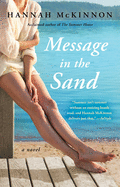
| Publisher: | Emily Bestler/Atria | |
| Genre: | Women, Family Life, General, Literary, Fiction | |
| ISBN: | 9781982114572 | |
| Pub Date: | June 2021 | |
| Price: | $17 |
| Fiction |
by Hannah McKinnon
A cast of deeply wounded souls struggles with devastating losses in Message in the Sand, a gripping, heart-wrenching novel of domestic fiction by Hannah McKinnon.
The novel is set at White Pines, a sprawling, idyllic estate nestled in the woods and wetlands of bucolic Saybrook, Conn. The Lancaster family--a loving husband and wife and their two daughters, Julia, age 15, and Pippa, age six--own the estate managed by Wendell Combs, a 39-year-old loner. Wendell is a veteran of the war in Afghanistan suffering PTSD. Having lost both his parents and his brother, who died in the war, Wendell, in turmoil, walks away from a long-term romantic relationship. However, the kindness of the Lancasters and his work at White Pines bring him a sense of purpose, pride and peace.
When the Lancaster parents die unexpectedly, the lives of Julia, Pippa and Wendell are turned upside-down--even more so when the estranged Aunt Candace becomes the girls' legal guardian. When Candace decides to sell White Pines and take Julia and Pippa to live with her in London, the girls put up a determined, calculated fight. As an emotional tug of war rages, the gentle, familiar presence of Wendell becomes a stabilizing force for Julia and Pippa. This bond, however, drives a wedge between conflicting interests in figuring out what is truly best for the girls and their futures.
Marked by evocative prose and revealing, layered insights, McKinnon (The View from Here; The Summer House) sensitively maps a host of multi-faceted emotional issues for all involved. --Kathleen Gerard, blogger at Reading Between the Lines
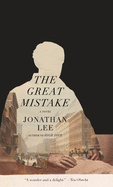
| Publisher: | Knopf | |
| Genre: | Psychological, General, Biographical, Fiction, Historical, Gay, LGBTQ+ | |
| ISBN: | 9780525658498 | |
| Pub Date: | June 2021 | |
| Price: | $26.95 |
| Fiction |
by Jonathan Lee
The Great Mistake begins with the murder of the historical figure Andrew Haswell Green (1820-1903), a city planner who was known in his day as the Father of Greater New York. Jonathan Lee's wondersome novel proceeds to piece together the events that led to Green's death, but the book's central mystery is psychological, not circumstantial: Why did someone so renowned for his civic contributions lead such an emotionally unfulfilling life?
Chapters dedicated to the city's investigation into Green's murder twine with chapters charting his past, from his inauspicious beginnings on a Massachusetts farm ("His family feared he might one day succumb to the catastrophe of being a poet") through his maturation into the person who helped establish such enduring Manhattan landmarks as Central Park and the Metropolitan Museum of Art. Green sought to "create work for himself that might fill him with pride instead of shame," but his shame wasn't restricted to his humble origins: Lee writes heartrendingly of a closeted romance between Green and Samuel J. Tilden, who would become the governor of New York.
Lee (High Dive) has done a masterly job reviving and embroidering the life of an undersung public figure who crossed paths with other notables; The Great Mistake features cameos by, among others, Green's occasional adversary Frederick Law Olmsted. With unshowy dexterity, Lee conjures the inner life of a man widely regarded as, the novel suggests, "a person who, in his last twenty years, had campaigned tirelessly against the idea of isolation, while himself remaining isolated." --Nell Beram, author and freelance writer
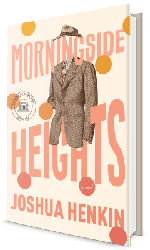
| Publisher: | Pantheon Books | |
| Genre: | Family Life, General, City Life, Fiction, Jewish | |
| ISBN: | 9781524748357 | |
| Pub Date: | June 2021 | |
| Price: | $26.95 |
| Fiction |
by Joshua Henkin
In Morningside Heights, a complex and character-driven novel, Joshua Henkin (The World Without You; Matrimony) explores what is lost and gained in loving another person: a parent, a spouse, a child, a sibling, a friend.
When Pru moves to New York City in 1976, she thinks she knows what she wants. But while studying Shakespeare, she falls head over heels for her grad school professor--a cliché even to her, as an active participant in the affair--and ultimately abandons her academic pursuits in favor of marriage to the brilliant Spence Robin. The two have a daughter, Sarah, and occasionally host Spence's son, Arlo, for visits. Each week, Spence visits his sister, Enid, brain damaged from a drunk driving accident as a teen, in a nearby nursing home. Sarah goes to college. Arlo meets Enid. Spence teaches. Pru gets a job in fundraising. Life ticks on.
And then, decades later, Spence begins acting oddly. Forgetting words, moments, names. Mixing up details, missing classes. He and Pru attend a costume party in black tie clothing when Spence misunderstands "festive" attire to be "formal" attire. It's almost funny, except that there is an underlying concern to the scene that implies there is something more sinister than a need for better reading glasses. Readers will not be surprised when these symptoms ultimately lead to a diagnosis of early-onset Alzheimer's; Pru, on the other hand, is caught off guard, once again finding that the life she thought she had planned out is gone.
This diagnosis drives Morningside Heights forward to its sadly inevitable conclusion. Alzheimer's, after all, remains incurable. Drawing in part on his own experience watching his father battle the disease, Henkin explores with great tenderness the many, many challenges of losing a loved one to Alzheimer's, the ways in which it both saddens and frustrates, moves too slowly and also entirely too fast. "Tell me all the things I'm going to forget," Spence says to Pru shortly after his diagnosis. "Will I forget to love you?... Don't let me forget to love you."
It is impossible to read such an exchange and not be moved, not to see the gentle ways Henkin picks and probes at the unique form of loss that Alzheimer's puts a family through. Despite this, though, Morningside Heights is not, ultimately, a sad novel. Henkin imbues it with a sense of hope, a kind of appreciation for the mundane moments that make up a life, the relationships that define not just who a person is, but what they can become.
Though Pru and Spence's relationship forms the backbone of Morningside Heights, Henkin expertly moves between the internal and external thoughts of each of the many characters in its pages. In so doing, the novel offers nuanced perspectives of the relationships among them. Pru sees herself as a professor's wife, then as caregiver for an ailing husband; a mother who heaps praise upon her daughter, and a stepmother who sometimes stumbles in finding patience for a troubled stepson. Arlo yearns for love and stability from his mother, his father, Pru, from anyone in his family, and, failing to find it, settles for attention instead. Sarah antagonizes her half-brother only to wish for his company when he's gone.
The true depth of Morningside Heights lies in Henkin's ability to portray each of these relationships at a particular moment in time, but also in the ways that they--like all relationships--are fluid. In speaking of his relationship with Spence, Pru tells Arlo, "There's regret on both sides. But that doesn't have to be the end of the story." And it is not the end of the story, metaphorically or literally; this exchange happens midway through the book, despite it being near the end of Spence's life.
Henkin uses these connections and the moments they are made of to move Morningside Heights backward and forward in time, from Pru's arrival in New York in the 1970s to Spence's funeral in the early 2000s. This is not, however, a novel of flashbacks or vignettes; the shift from past to present and back again is so fluid that the effect is kaleidoscopic, each moment bleeding into the next in ways that shed new light on what we know and understand about this family and its many dimensions.
Morningside Heights is powerful in a quiet, unsuspecting way. Nothing particularly big happens. There are no twists, no magical cures to Spence's illness, no perfect resolution between characters who have been unkind to one another over the years. But in Henkin's masterful hands, this story of everyday events becomes bigger than the sum of its parts, a novel that explores what it means--and what it takes--to love another person, and to be loved in return. --Kerry McHugh

| Publisher: | Soho Crime | |
| Genre: | Mystery & Detective, Traditional, International Crime & Mystery, General, Fiction, Historical, Women Sleuths | |
| ISBN: | 9781641291057 | |
| Pub Date: | June 2021 | |
| Price: | $27.95 |
| Mystery & Thriller |
by Sujata Massey
Sujata Massey introduced feisty Perveen Mistry, India's first female solicitor, in the Agatha Award-winning The Widows of Malabar Hill in 2018. In the meticulously researched and entertainingly executed The Bombay Prince, Massey continues to mine details from the lives of two groundbreaking Indian women--Cornelia Sorabji and Mithan Jamshed Lam--who were legal pioneers in early 1920s Mumbai, then called Bombay. Perveen, with her Oxford education, is half of Mistry Law with her father; her gender grants her access to female clients otherwise denied fair representation. She saves cloistered women and children in Book 1 and attempts the same in Book 2, The Satapur Moonstone (2019), working as a legal investigator to a royal family desperate to protect the maharaja heir.
In Book 3, The Bombay Prince, Massey (author of the Rei Shimura series) uses the real-life 1921-1922 tour of the Indian subcontinent by the Prince of Wales (the future Edward VIII) as backdrop to murder. The visit splits Bombay between British loyalists and those fighting for Indian independence. A Woodburn College student, Freny Cuttingmaster, visits the Mistry office seeking advice about her academic future if she were to participate in student protests. Later that week, she ends up dead on the college grounds; the tragedy is ruled a homicide. Perveen, of course, will find Freny's killer.
Massey plots an intricate mystery well worth solving; even more impressive, however, are the seamlessly interwoven historical, political and social layers--suffocating colonialism, societal systems more concerned with appearance than equity, racial and gender disparities. Meanwhile, Perveen, still married to her abuser from The Widows of Malabar Hill, is reunited with her The Satapur Moonstonecolleague and expected to maintain her distance in The Bombay Prince. Body count aside, future installments promise tempting complications. --Terry Hong, Smithsonian BookDragon
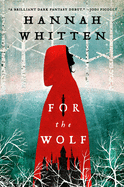
| Publisher: | Orbit | |
| Genre: | Epic, Dark Fantasy, Fantasy, Romance, Fiction, Action & Adventure | |
| ISBN: | 9780316592789 | |
| Pub Date: | June 2021 | |
| Price: | $17.99 |
| Science Fiction & Fantasy |
by Hannah Whitten
Full of murderous plants, secrets and romance, Hannah Whitten's For the Wolf is an enthralling fantasy debut that will leave readers eager for more. The younger of twin sisters, Red has been raised from birth to fulfill a centuries-old demand: the second daughter is "For the Wolf." Over several centuries, Red's society has sent a few young women, each of whom developed a magical mark around the age of 20, into the Wilderwood in hope of satisfying the Wolf and convincing him to free the Five Kings.
Skeptical but compelled magically and socially, Red enters the cursed forest full of horrors, barely escaping the trees and roots desperate for her blood, and makes her way to the Wolf's crumbling, forbidding castle. With elements of Little Red Riding Hood and Beauty and the Beast, For the Wolf plays with several tropes familiar to Western readers while never feeling constrained by the framework of a strict retelling. There's a brooding, tortured young man in a terrifying forest, forced to live out his days fending off an ancient curse and the mysterious entity behind it all. There's a heroine with more power than anyone expects. And there's an irresistible romance.
Whitten's detailed imagery builds an atmosphere of dread and horror, and strong characters, the romance between them and the promise of answers propel readers forward as the novel builds to a riveting conclusion.
For the Wolf is poised to capture readers as surely as the Wilderwood does Red and her Wolf. --Suzanne Krohn, editor, Love in Panels

| Publisher: | Harper Wave | |
| Genre: | Cooking, Central American & South American, General, Regional & Ethnic, Seasonal, Entertaining | |
| ISBN: | 9780063019430 | |
| Pub Date: | June 2021 | |
| Price: | $32.50 |
| Food & Wine |
by Mariana Velásquez
Mariana Velásquez has spent decades working in professional kitchens and as a food stylist for other people's cookbooks. Now, in Colombiana: A Rediscovery of Recipes and Rituals from the Soul of Colombia, Velásquez has created her own cookbook, filled with lush photographs and more than 90 delectable recipes.
Paying homage to her Colombian upbringing, Velásquez notes the biodiversity of the country and the wide variety of influences upon its food: "our cuisine is a hearty mix of Indigenous, African, and European cultures." Across Colombia there are scores of culinary traditions rooted in this physical and biological diversity. Velásquez has identified three common foods that are representative of all Colombians: arepas (grilled corn cakes), empanadas (deep-fried dough pockets with a vast variety of fillings) and the one-pot stew, which varies from fish and coconut-based stews along the coast, to beans and plantains in the jungles, and chicken and potatoes in the Andes.
Colombiana showcases recipes from around the country, grouped by type. En La Mañana (in the morning) features the aforementioned arepas, changua bogotana (milk and egg soup) and chocolate santafereño (hot chocolate with cheese). Other sections are El Algo ("afternoon bits and bites") and Oda Al Postre (ode to dessert). Each section is full of gorgeous photographs, showcasing both Velásquez's love of cooking and her talent for food styling. Novice cooks as well as experienced chefs are sure to enjoy the novelty of Colombiana, since the country's cuisine is not common in many parts of the United States. Colombiana would make an appealing addition to any cookbook library. --Jessica Howard, bookseller at Bookmans, Tucson, Ariz.
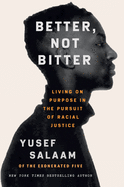
| Publisher: | Grand Central | |
| Genre: | Biography & Autobiography, Self-Help, Race & Ethnic Relations, Personal Memoirs, Motivational & Inspirational, Social Science | |
| ISBN: | 9781538705001 | |
| Pub Date: | May 2021 | |
| Price: | $28 |
| Starred | Biography & Memoir |
by Yusef Salaam
They called Yusef Salaam and the other boys now known as the Exonerated Five "super-predators." Yet Salaam is much more than those initial racist media reports made him out to be, and his book Better Not Bitter: Living on Purpose in the Pursuit of Racial Justice is a testament to his leadership and service. An award-winning motivational speaker and bestselling author (Punching the Air, co-authored with Ibi Ziboi), Salaam, who spent nearly seven years in jail after he was wrongly convicted of rape and assault, has reimagined his pain as power in this memoir. Chronicling his childhood in 1980s Harlem through recent years as a formerly incarcerated activist, Salaam is intent on using his personal story as a launching pad for racial justice.
Better Not Bitter derives its impact from Salaam's straightforward and lucid writing. Though Salaam is candid about the injustices he faced, the tone of the book isn't grave. Rather, Salaam is able to convey hope and humor while illuminating the many ways violence thrives. As he writes in the book, "The way I move through the world and how I see myself have forever been altered by the levels of uncertainty I had to climb my way out of. But I returned to society and learned how to live on my own two feet."
The manifestation of years of silencing, Better Not Bitter is a wake-up call that urges readers to "dream again" and to recognize the ways in which they've been imprisoned--whether in a physical prison, or by racism, capitalism, health issues or other societal ills and injustices. --Gwen Aviles, freelance writer
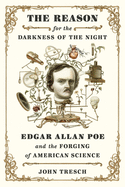
| Publisher: | Farrar, Straus and Giroux | |
| Genre: | Biography & Autobiography, Science Fiction & Fantasy, Literary Figures, Literary Criticism, Science, History | |
| ISBN: | 9780374247850 | |
| Pub Date: | June 2021 | |
| Price: | $30 |
| Biography & Memoir |
by John Tresch
Mention Edgar Allan Poe to most readers and the name will conjure a chilling memory of a macabre tale like "The Pit and the Pendulum," or perhaps an image of a tortured artist who died young. It's almost certain those associations won't connect the writer to the world of science.
The Reason for the Darkness of the Night by John Tresch (The Romantic Machine) may help change that. Tresch, professor of History of Art, Science, and Folk Practice at the Warburg Institute in the University of London, undertakes a comprehensive examination of this little-known and significantly underappreciated facet of Poe's career. It's an admiring, intellectually stimulating portrait of a man Tresch describes as nothing less than "an analyst, a philosopher, and a detective, seeking to crack the code of the universe."
Poe's interest in astronomy dated at least to his teenage years, and he studied that subject, along with mathematics and geometry, at West Point. It was an age when science was beginning to professionalize and assume a more prominent role in American life, as the young country began to challenge Britain for primacy in the field. While he was conversant with many of these developments, Poe worked along a parallel path, offering "an alternative vision of science and the cosmos in which intuition, feeling, and imagination played leading roles."
Edgar Allan Poe's status as a major American literary figure is long established. But John Tresch's Reason for the Darkness of the Night now should encourage the curious and open-minded to devote fresh attention to the artist's contributions to the advancement of scientific thought. --Harvey Freedenberg, freelance reviewer
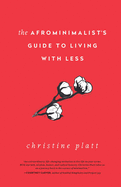
| Publisher: | Tiller Press | |
| Genre: | Self-Help, Personal Growth, Happiness, Sustainable Living, House & Home, Cleaning, Caretaking & Organizing | |
| ISBN: | 9781982168049 | |
| Pub Date: | June 2021 | |
| Price: | $21.99 |
| House & Home |
by Christine Platt
Christine Platt--self-dubbed the "Afrominimalist"--was not always a minimalist. Through the process of a divorce and downsizing, however, she came to embrace the concept of minimalism. Hers is a particular brand of it, inspired by the African diaspora and devoid of rules around a specific number of items one can own or what color those items can be, instead opting for "authenticity over aesthetics." She documents this process in detail in The Afrominimalist's Guide to Living with Less, which explores both the psychology of stuff (why we acquire it, and how we feel about it once we do) and the process of de-cluttering, with step-by-step instructions to start living with less.
Platt encourages readers to consider each item they own through the lens of "need, use, love." In focusing on what we actually need, use and love, Platt argues, we can whittle down our belongings to best "reflect our truest selves." "For the Culture" sections throughout address the "specific needs and concerns of Black people and [will] be relatable to other marginalized communities," though Platt notes that these call-outs should also be used by other readers to "gain awareness, build empathy, and... identify ways to help course-correct generational inequalities." Combining the psychology of purchasing and ownership with concrete, actionable steps, The Afrominimalist's Guide to Living with Less stands out in the otherwise crowded genre of de-cluttering books. Grounded in the context of Platt's experience as a Black woman in a space often dominated by white voices, Platt's concept of Afrominimalism offers a flexible and approachable guide to crafting life with less. --Kerry McHugh, blogger at Entomology of a Bookworm
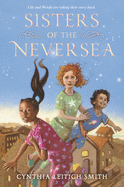
| Publisher: | Heartdrum/HarperCollins | |
| Genre: | Adaptations, United States - Native American, Friendship, Fantasy & Magic, People & Places, Family, Social Themes, Blended Families, Juvenile Fiction, Action & Adventure, Fairy Tales & Folklore | |
| ISBN: | 9780062869975 | |
| Pub Date: | June 2021 | |
| Price: | $16.99 |
| Starred | Children's & Young Adult |
by Cynthia L. Smith
Muscogee Creek author Cynthia Leitich Smith (Ancestor Approved; Hearts Unbroken) reimagines J.M. Barrie's beloved yet problematic children's classic Peter Pan in this wry, immersive fantasy about female friendship, inclusivity and the meaning of family.
Although relatives remember a recent time "when the girls were inseparable," the friendship between 12-year-old stepsisters Wendy Darling and Lily Roberts has hit turbulence. Their parents are separating for the summer, with Wendy and her father traveling to New York while Lily and the girls' four-year-old brother, Michael, stay in Tulsa, Okla., with their mother. On Wendy's last night in Tulsa, Lily worries divorce means she and Wendy can't stay sisters, and Wendy is frustrated because Lily won't fly to New York with them. The tension keeps the girls from noticing "the tiny, sparkling glow, nearly hidden in the wise old oak tree" or the "crouched, shadowy figure within its branches" until Peter Pan and Belle the Fairy zip through the bedroom window. Practical Lily, who is Muscogee Creek, distrusts Peter immediately, a sentiment reinforced by his talk of "Injuns." But his magic beguiles fanciful Wendy, who is white, and she accepts when he invites her and Michael to Neverland. The island, however, is not exactly the Merfolk-inhabited wonderland Peter promised.
Smith restores Peter Pan to his original depiction as a vain, capricious bully capable of both charming and terrorizing others, but she treats him with some compassion as well. Her adept use of a charming, third-person omniscient voice similar to Barrie's style lightens this ambitious excavation of Peter Pan's racist leanings. Wendy and Lily are flawed yet eminently competent heroines, and their empathy provides an excellent foil for Peter's narrow-minded worldview. Any reader looking for a brilliant, suspenseful fantasy adventure should find Sisters of the Neversea thrilling and tremendously fun. --Jaclyn Fulwood, youth experience manager, Dayton Metro Library
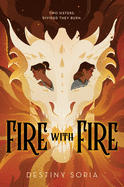
| Publisher: | Houghton Mifflin Harcourt | |
| Genre: | Fantasy, Contemporary, Romance, General, Family, Young Adult Fiction, Action & Adventure, LGBTQ+, Siblings | |
| ISBN: | 9780358329732 | |
| Pub Date: | June 2021 | |
| Price: | $17.99 |
| Children's & Young Adult |
by Destiny Soria
Destiny Soria's beguiling tale of dragons and their would-be slayers, Fire with Fire, delves into the worrisome problem of what might ensue when prevailing wisdom turns out to be wrong.
Seventeen-year-old Dani really wishes she could be a "normal teenager," but she comes from a "legendary family of dragon slayers" responsible for ridding the world of dragons and keeping their existence a secret. She puts up with training, tracking and lessons on ancient weaponry because "that's what it mean[s] to be a Rivera." One evening, Dani opts to attend a high school bonfire instead of eating dinner with her parents, her older sister, Eden, and a pair of sorcerers. At the fire, Dani runs into her ex-best friend who left town after the pair kissed. Dani flees and, because she can't go home yet, pulls over to waste some time--and finds herself face-to-face with a dragon. Despite all her training, the dragon is poised to burn her to a crisp when Dani and the creature experience "a strange, terrible connection." The two have a "soul bond" that puts Dani completely at odds with her family's legacy and with Eden, whose growing interest in sorcerers might potentially be even more troubling than Dani's newfound ability.
Soria's imaginative dragon tale is full of action. Soria (Iron Cast) offers a new take on dragon lore, which she firmly grounds in an inclusive, contemporary setting featuring a diverse cast, an extensive network of Latinx dragon slayers, a protagonist who embraces her bisexuality and a dragon with a very dry sense of humor. Add in some evil sorcerers and a hot crush or two, and readers looking for engrossing fantasy should be extremely pleased with this offering. --Lynn Becker, reviewer, blogger, and children's book author